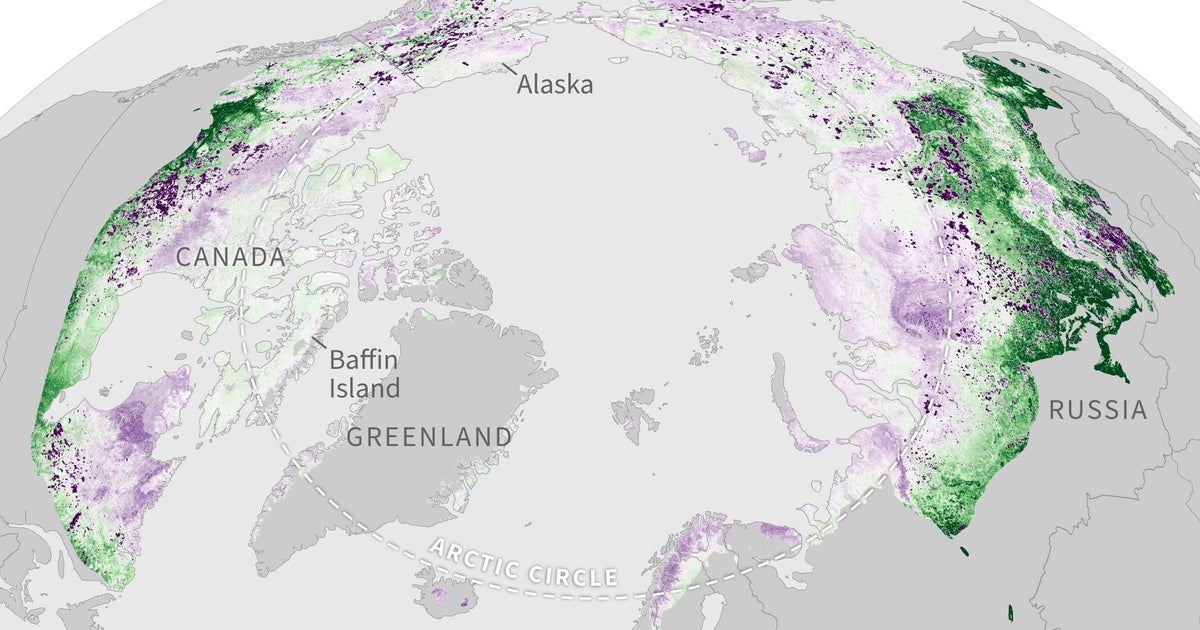About 3 million Americans are already "climate migrants," analysis finds. Here's where they left.
Climate change is already forcing millions of people around the world to leave their homes to seek refuge from the rising seas, devastating droughts and the other effects of global warming. But that migration is also happening within the U.S. as extreme weather makes parts of the country virtually inhospitable, according to a new analysis.
About 3.2 million Americans have moved due to the mounting risk of flooding, the First Street Foundation said in a report that focuses on so-called "climate abandonment areas," or locations where the local population fell between 2000 and 2020 because of risks linked to climate change.
Many of those areas are in parts of the country that also have seen a surge of migration during the past two decades, including Sun Belt states such as Florida and Texas. Such communities risk an economic downward spiral as population loss causes a decline in property values and local services, the group found.
"There appears to be clear winners and losers in regard to the impact of flood risk on neighborhood level population change," Jeremy Porter, head of climate implications research at the First Street Foundation, said in a statement.
He added, "The downstream implications of this are massive and impact property values, neighborhood composition, and commercial viability both positively and negatively."
Where people are moving
Climate abandonment areas exist across the U.S., even in some of the nation's fastest-growing metro areas, according to the study, which was published in the peer-reviewed Nature Communications journal.
About 513 counties saw their populations grow at a faster-than-average pace during the last two decades, yet they also included neighborhoods that lost population in areas of high flooding risk, the analysis found.
Most of those areas are concentrated in three regions:
- Gulf Coast of Texas
- Mid-Atlantic region between Washington, D.C., and New Jersey
- Most of coastal Florida
The most affected municipality is Bexar County in Texas, which includes San Antonio. Between 2000 and 2020, the county added more than 644,000 new residents, yet still lost population in about 17% of its Census blocks, according to First Street. (In urban areas, Census blocks are smaller areas that resemble city blocks, although in rural areas they can be quite large and be defined by natural features like rivers.)
Other counties with the largest share of population migration due to flooding risk include Will County, Illinois, and El Paso County in Texas, the study found.
Midwest could be hard-hit
The analysis also examines which regions of the U.S. could face climate migration in the coming decades, and, perhaps surprisingly, Midwestern states including Illinois, Indiana, Michigan and Ohio face some of the highest risks, the study found.
That may seem counterintuitive, Porter noted in an email to CBS MoneyWatch. But the reason is due to the forecast that coastal areas will likely remain appealing, despite climate risk, to people searching for better jobs.
"In many coastal cities, we see that the draw, or "pull," of the amenities and economic opportunity in the region is stronger than the "push" from flood risks, he noted. But "downward migration" is likely to occur in the Midwest and Northeast because these regions don't have the same attraction for people who are relocating, he noted.
Extreme weather in the form of increased flooding and massive wildfires is particularly affecting people's homes. Across the U.S., nearly 36 million properties — one-quarter of all U.S. real estate — face rising insurance prices and reduced coverage due to high climate risks, First Street found in an earlier analysis this year.




